We want you to share Forests News content, which is licensed under Creative Commons Attribution-NonCommercial-ShareAlike 4.0 International (CC BY-NC-SA 4.0). This means you are free to redistribute our material for non-commercial purposes. All we ask is that you give Forests News appropriate credit and link to the original Forests News content, indicate if changes were made, and distribute your contributions under the same Creative Commons license. You must notify Forests News if you repost, reprint or reuse our materials by contacting forestsnews@cifor-icraf.org.
Sharing stories of community-based
Fire prevention is a critical strand of climate change mitigation and ecosystem protection in many parts of the globe. Fires emit large volumes of greenhouse gas (GHG) emissions, cause significant economic losses, and have detrimental effects on health and other sectors – such as through the release of haze, which can cause chronic respiratory diseases that can then be further aggravated by illnesses such as COVID-19.
But fire remains an efficient short-term tool for smallholders to clear land for agriculture, and as such it continues to be used in many rural settings, especially when livelihoods are tight. In Indonesia, for instance, despite government “zero burn” programmes and campaigns at national and subnational levels, fires continue to be used in many rural regions because land preparation using fire is a traditional practice for the new planting season – and is the cheapest method of land preparation.

Morning fog in Siak City
In that context, a team of researchers from the Center for International Forestry Research and World Agroforestry (CIFOR-ICRAF), the Center for Disaster Studies at the University of Riau (Pusat Studi Bencana Universitas Riau – PSB UNRI), and Sedagho Siak have been working on a community-based fire prevention and peatland restoration project using Participatory Action Research (PAR).
Beginning with a successful pilot in Dompas Village in Bengkalis Regency of Riau Province, they’ve more recently begun to scale the work to Kayu Ara Permai and Penyengat Village of Siak District at the request of Siak Government. The research expects to contribute towards its Green Siak initiative. Now, there are opportunities to scale the model up to the whole of Riau Province as part of a commitment to the 2019–2024 Green Riau programme. “Our participatory action research embraces the co-creation process and is a platform to exercise collective action,” said Dyah Puspitaloka, a CIFOR-ICRAF researcher who is involved in the project.
From 28 November to 1 December 2022, CIFOR-ICRAF, PSB UNRI, Sedagho Siak, the Green Siak Secretariat, and the Government of Siak – with funding from the Temasek Foundation and the Singapore Cooperation Enterprise (SCE) – ran a project field visit and media workshop. The event provided an opportunity for partners, journalists and wider audiences to learn about community-based fire prevention and peatland restoration towards the achievement of the Indonesian government’s forests and land use (FOLU) Net Sink 2030 target (which aims for net-negative emissions from the national FOLU sector by 2030), and post-COVID-19 national economic recovery.
The event, which was attended by 15 journalists from 13 different mass media outlets, showcased community stories and practices in fire prevention, peatland restoration, and sustainable business models – most notably through field visits to two local villages, Kayu Ara Permai and Penyengat. In Kayu Ara Permai, participants explored coffee agroforestry, edu-eco-tourism, and horticulture businesses that had been established with the help of the project. In Penyengat, they observed examples of landscape greening, agroforestry, and a women’s group home gardening business. “We shared lessons learned from the community-based initiatives in Kayu Ara Permai and Penyengat Village as a way to encourage and support similar efforts in other areas,” said Puspitaloka, who helped to run the event. “The visits showed clearly how restoration needs to be integrated with sustainable business models for communities, in order to provide benefits and build collective action and independence to sustain restoration efforts.”.
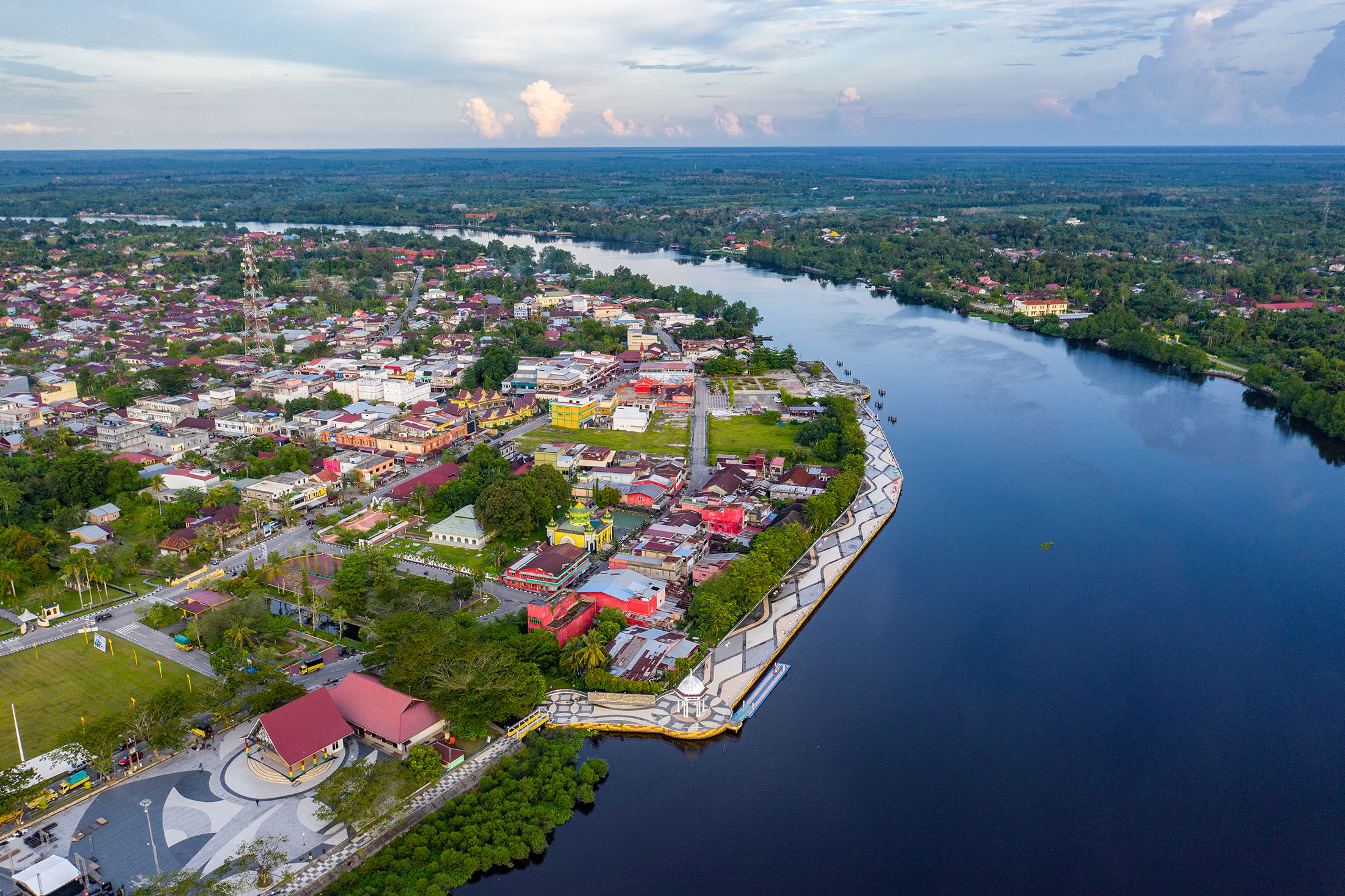
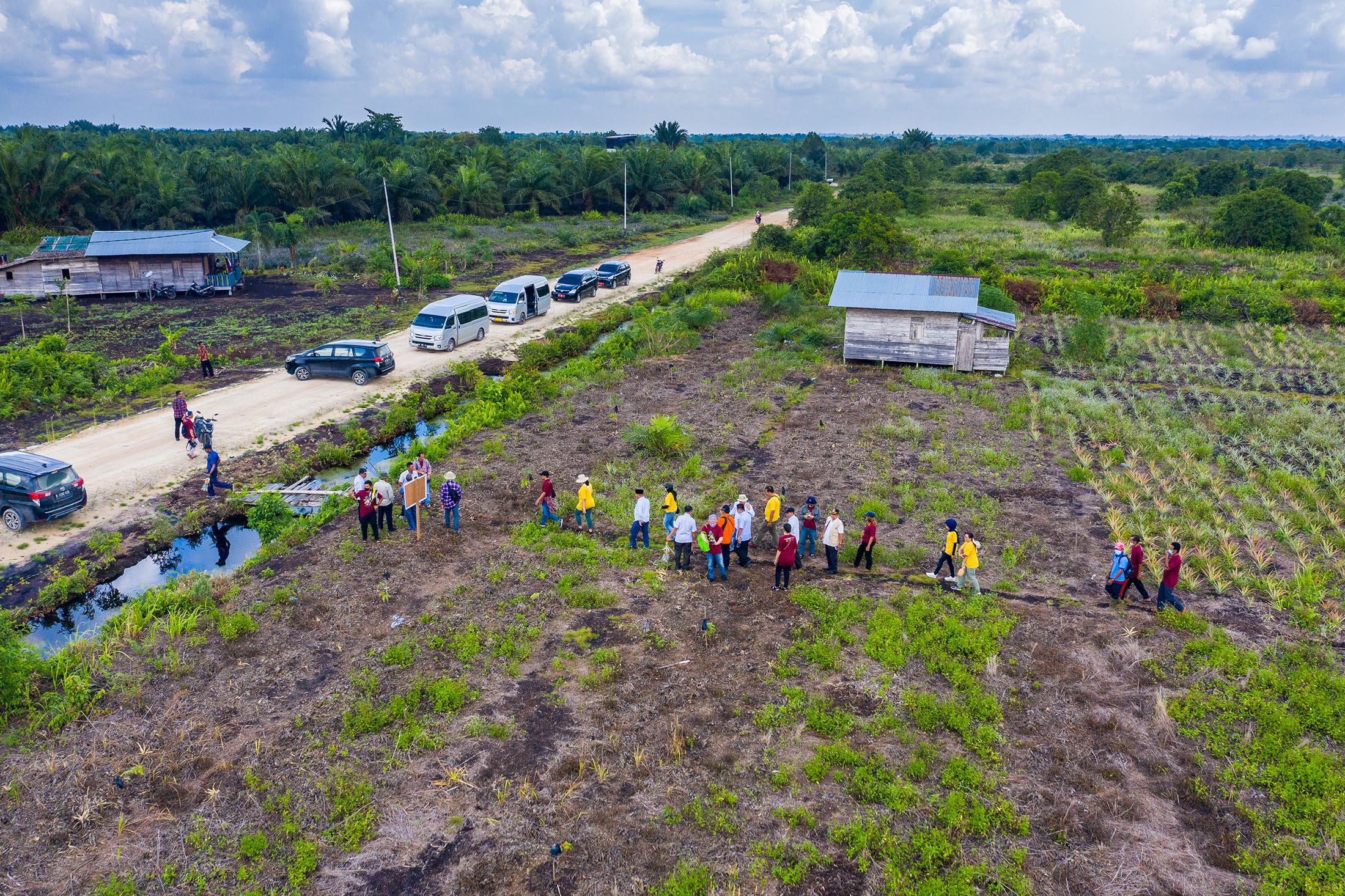

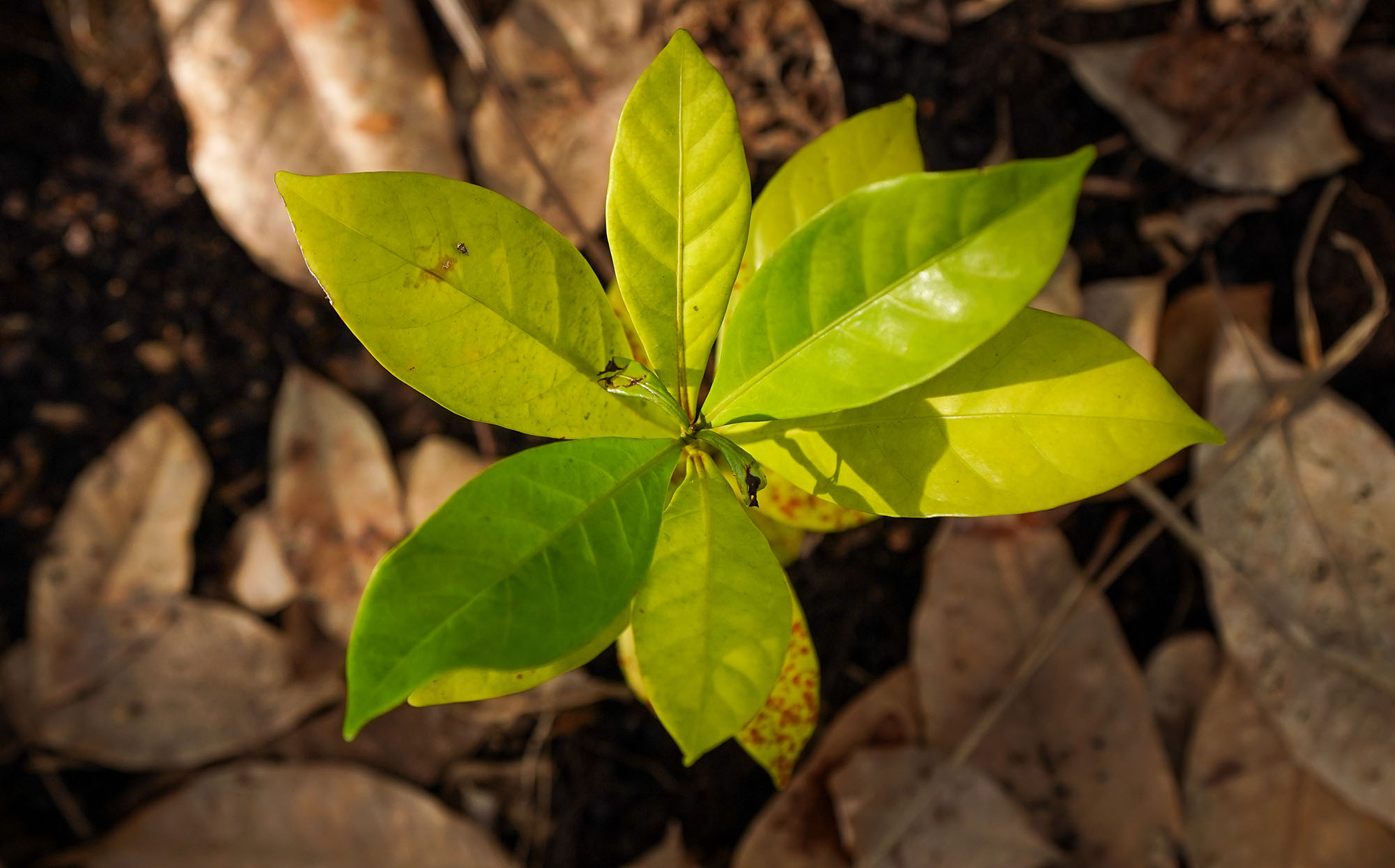
Herry Purnomo, a CIFOR-ICRAF Indonesia Deputy Country Director and senior scientist who specializes in forest management and policy, who was also involved in the event, said that a participatory approach to this kind of work is critical, because “each community and their area is unique. A solution must be found there, and together with them, rather than prescribed from somewhere else.”
That approach was apparent to Hans Nicholas Jong, a staff writer for the international conservation news site Mongabay who attended the workshop. “It’s great to see how these communities were involved from the very beginning,” he said. “I could see how engaged they are in the research since they’re the ones who decide on the model of peat restoration and management.” He said the workshop also helped him to make important local connections: “The trip gave me the chance to talk to public officials and learn about their policies,” he said. “Without the trip, it would have been difficult for me to get all that knowledge, as I would have had to rely on phone calls to talk to sources in the field.”
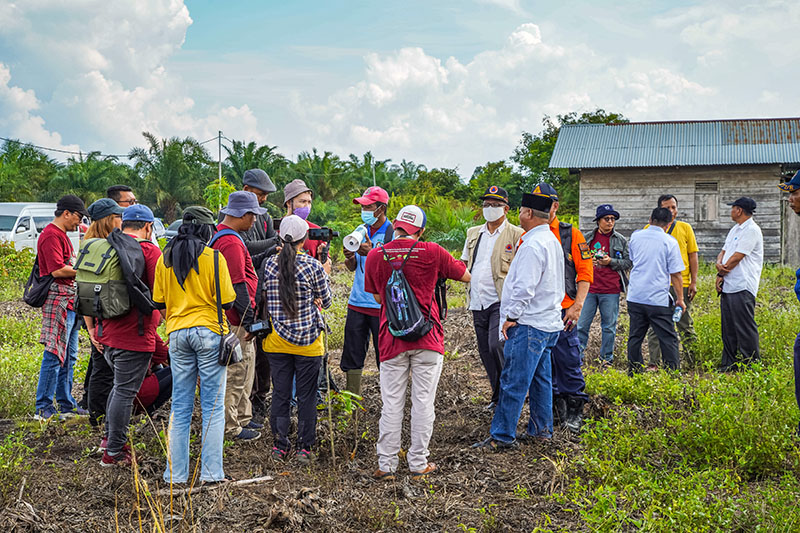
Field visits to the agroforestry and greening landscape demonstration plots in Sungai Apit District, Penyengat Village.

Focus group discussion (FGD) between CIFOR scientists, journalists, and academics at Riau University, on conceptualizing and implementing the prevention of forest and land fires, alongside community-based peat restoration, in Riau Province.
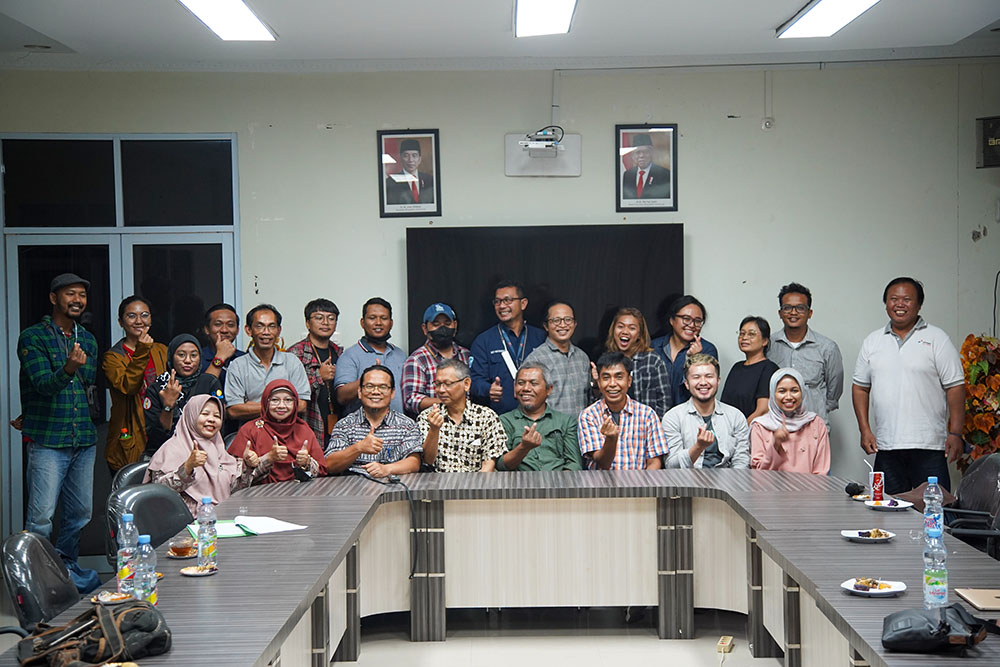
Participants and facilitators of the media trip.
Purnomo also highlighted the need for appropriate actions at different scales. “Action from multiple actors at multiple levels is necessary to prevent forest and land fires and support peatland restoration,” he said. “FOLU Net Sink 2030 and Low Carbon Development Initiatives (LCDI) must be broken down into relevant actions at scale – including the small scale, which must be led by communities.”
More broadly, policy support at national and subnational levels (province and regency), and engagement with the private sector, “is a must,” said Purnomo. “Public sector support makes restoration legitimate, while private sector support increases the effectiveness of restoration and enlarges its scale.”
Story development : Monica Evans | Photos and video production: Ricky Martin | Web design: Gusdiyanto | Publication coordination : Budhy Kristanty
We want you to share Forests News content, which is licensed under Creative Commons Attribution-NonCommercial-ShareAlike 4.0 International (CC BY-NC-SA 4.0). This means you are free to redistribute our material for non-commercial purposes. All we ask is that you give Forests News appropriate credit and link to the original Forests News content, indicate if changes were made, and distribute your contributions under the same Creative Commons license. You must notify Forests News if you repost, reprint or reuse our materials by contacting forestsnews@cifor-icraf.org.



